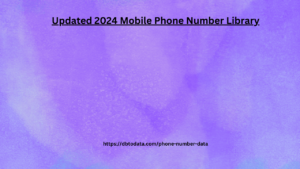To achieve the mission of the Sendai Framework to reduce global disasters and losses, the theme of the International Day for Disaster Reduction (IDDRR) 2024, observed on 13 October, is the role of education in protection and empowering young people to be able to access help. a future without disasters. To commemorate the day, ISC is promoting the development of practical science that can support vulnerability reduction and resilience building at different scales by sharing a recent article from The Conversation. You can also explore ISC’s many resources to build a strong future for generations to come.
People help
an old man wade through floodwaters on September 12 in Maiduguri, Nigeria.
Extreme weather events – floods, droughts and heat waves – are not only increasing; they are also very difficult.It is important to understand how communities can recover from these events in ways that can build resilience to future events.
In a recent study , we analyzed how communities affected by the worst flood events of 2021 in the Ahr Valley of Germany and Lagos, Nigeria, coped with flood recovery.Our aim was to identify factors – and combinations of factors – that acted as barriers (or facilitators) to disaster recovery.
We found that financial constraints, political interests and administrative constraints led to the prioritization of rapid relief and reconstruction over a sustainable long-term recovery.
In both cases
immediate and long-term recovery efforts were siloed, underfunded and focused on rebuilding in pre-disaster conditions.
We conclude with our findings that the success of recovery efforts lies in balancing short-term relief with a long-term perspective. While immediate aid is critical after a disaster, true resilience depends on effective measures that address systemic challenges and empower communities to build a better future.
Rehabilitation should not only be action-oriented and build infrastructure (engineering). It should also include information in other areas, such as governance and psychology, helping people cope with loss and healing.
What worked
To understand the recovery mechanisms of these two regions, we reviewed relevant literature, newspaper articles and government documents. We also interviewed government agencies, NGO representatives, volunteers and local residents in the communities where these floods occurred.
We discovered that in the Ahr Valley, recovery was not just about rebuilding buildings, it was about empowering people.
Through programs like mental health and first aid courses, residents learned to support each other. This fostered a sense of community and resilience that was essential to meet the emotional challenges of disaster.
The focus on rebuilding from a sustainable perspective has also included environmental initiatives. For example, a type of heating system was installed in an area that was not dependent on fossil fuels.
Not only did this reduce carbon updated 2024 mobile phone number library emissions, it also served as a sign of hope. Show that there is an opportunity to create a sustainable and environmentally friendly society.
In Lagos,
too, citizens have found strength in how to use telegram for effective marketing community and innovation. Grassroots efforts using sustainable materials such as bamboo and palm wood highlighted the creativity and ingenuity of the people. Faith-based organizations provided material assistance as well as emotional and spiritual support. This strengthened the ties that held the community loan data together.
Each community faced unique challenges. But they share a common thread: the importance of flexible governance – flexible decision-making and strong social relations.
For example,
the established building codes in the Ahr Valley provided a framework for reconstruction, ensuring that new buildings are sustainable and safe.
In Lagos, the absence of strong government support highlighted the important role of civil society organizations in providing services and fostering a sense of collective responsibility.
What needs to be improved
In both Ahr Valley and Lagos, the journey to recovery is fraught with obstacles as well.
In Ahr village, bureaucratic red tape has become a formidable obstacle. Residents, eager to rebuild their lives, find themselves embroiled in a complex series of regulations and lengthy approval processes. This has delayed their access to insurance and recovery funds. Waiting for months or even years has destroyed hope and exacerbated feelings of abandonment.
Meanwhile, in Lagos, inadequate government support has left communities to fend for themselves, creating a breeding ground for uncertainty and conflict.
Tenure disputes,
fueled by a lack of clear territorial rights, sow the seeds of distrust and hinder resettlement efforts. Political disagreements complicate the picture, as competing interests divert attention and resources from those who need them most.
In Lagos, none of the respondents reported having insurance to help them recover from disaster-related losses.
While some Ahr Valley residents had insurance, many had low insurance.
The Ahr Valley building codes provide a framework for reconstruction. But it is clear that processes must be simplified so that communities can take ownership of restoration.
In Lagos, the importance of strong social safety nets is clear. Cooperation between communities and authorities is also necessary.
A different way
Recovery is not a unique process that occurs only after disasters. It should be considered an important part of risk management. It is important to understand what recovery involves and what resources are needed.
This will help reduce future risks and increase resilience after extreme events.
Governments should promote flexible governance structures that value community voices and local knowledge for recovery. A good example is the New Orleans Recovery Authority , which was established after Hurricane Katrina. It involved local residents and city officials in planning and rebuilding efforts.
Grassroots efforts in Lagos have demonstrated the power of sustainable and community-led initiatives. Seeing things from a community perspective can help to put together solutions that are relevant to the situation and adapt to changing challenges.
Training and capacity building programs empower communities to work on their own recovery.
Mental health and first aid courses were successful in the Ahr Valley. Equipping individuals with skills in sustainable practices and disaster preparedness helps build a community platform that can withstand future storms.
Authors:
Olasunkanmi Habeeb Okunola , Visiting Scientist, United Nations University – Center for Environment and Human Security (UNU-EHS), United Nations University
Saskia Werners , Head of Division and Academic Officer, Center for Environment and Human Security (UNU-EHS), United Nations University
This article is republished from The discussion under a Creative Commons license. Read the first article .
Disclaimer
The information, opinions and recommendations presented on our guest blogs are those of individuals, and do not reflect the values and beliefs of the International Scientific Council.
Photo credit:
People help an old man wade through floodwaters on September 12, 2024 in Maiduguri, Nigeria: Audu Marte/AFP via Getty Images via The Conversation.

